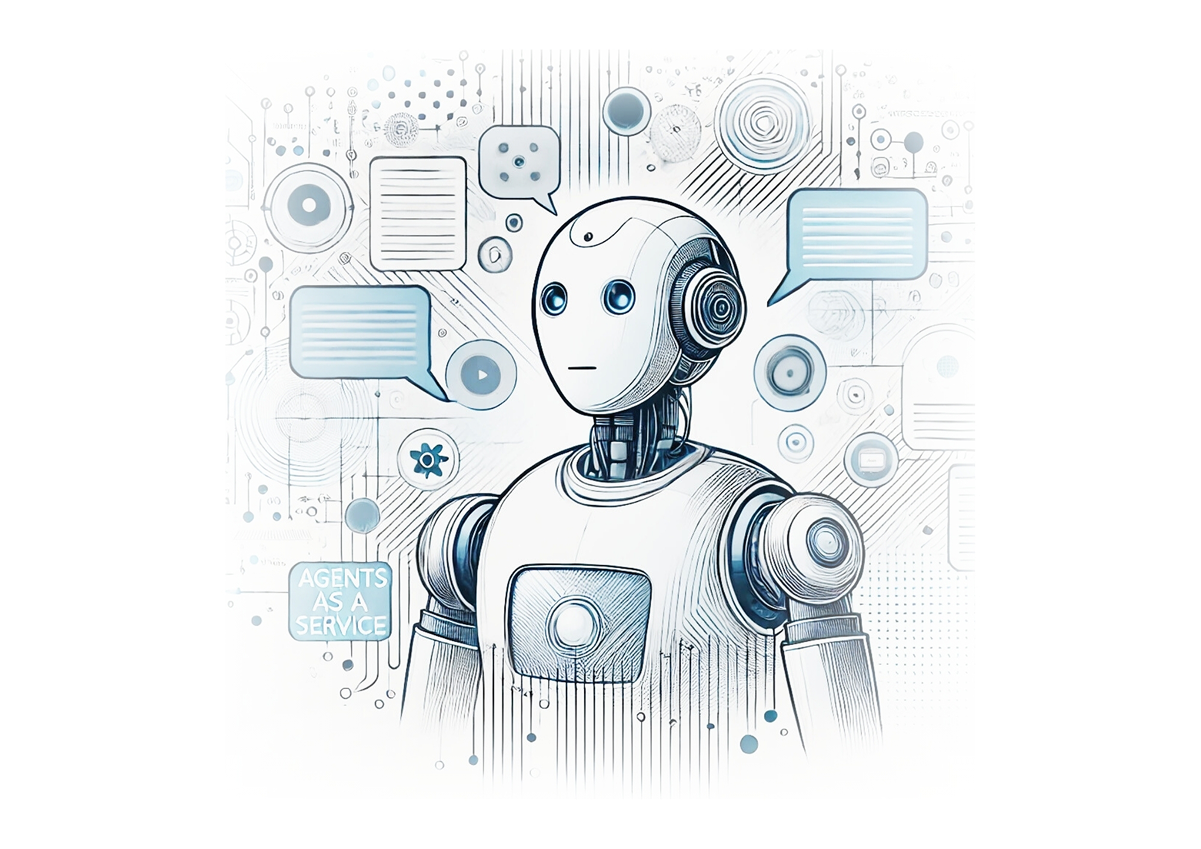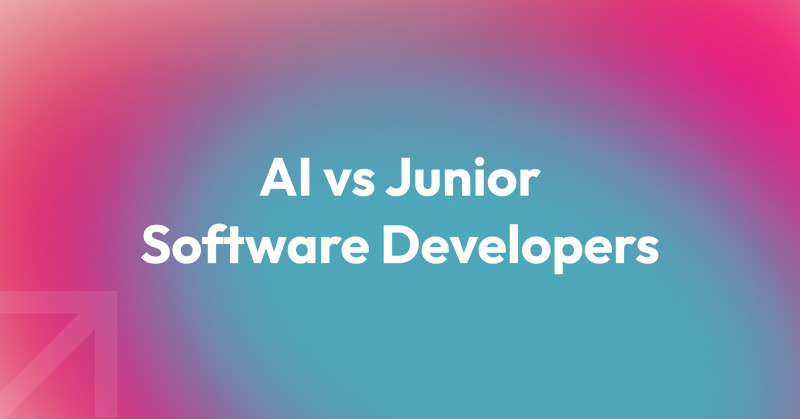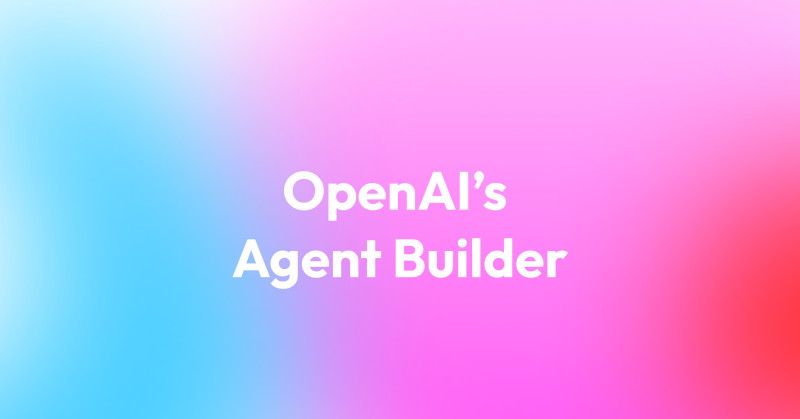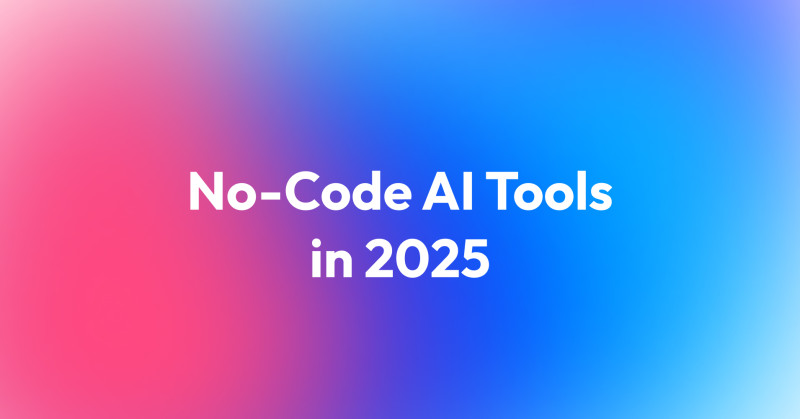Tänk dig att ha en mycket kompetent personlig assistent som arbetar 24/7, aldrig blir trött och kan hantera flera uppgifter samtidigt, vilket optimerar ditt arbetsflöde. Föreställ dig nu att den assistenten bor i molnet, drivs av generativ AI och externa API:er, redo att hjälpa företag och privatpersoner att uppnå sina mål. Detta är kärnan i Agent as a Service (AaaS), ett revolutionerande tillvägagångssätt som omformar hur vi tänker på programvara och SaaS-modellen.

Från SaaS till AaaS: Förstå övergången
För att förstå AaaS måste vi först titta på hur vi för närvarande använder programvarutjänster i agenternas tidsålder.
De flesta av oss är bekanta med Software as a Service (SaaS) - tänk på tjänster som Gmail eller Salesforce, där vi istället för att installera program på våra datorer får tillgång till dem via internet.
Även om SaaS har förändrat vårt sätt att arbeta kräver det fortfarande en hel del mänsklig input och hantering. Det är som att ha en sofistikerad verktygslåda - användbar, men du måste veta hur du ska använda varje verktyg.
Vad är det som gör AaaS annorlunda?
AI-agenter kombinerar artificiell intelligens, bearbetning av naturligt språk och maskininlärning för att förstå instruktioner på vanligt språk och utföra dem på ett intelligent sätt. Till skillnad från traditionell programvara som följer förprogrammerade regler kan AaaS-agenter lära sig av erfarenhet och justera sitt beteende baserat på resultat.
Intelligensen bakom AaaS
Kraften i AaaS ligger i dess förmåga att förstå sammanhang och anpassa sig, genom att utnyttja API:er och LLMS för förbättrad funktionalitet. Traditionell programvara följer förprogrammerade regler, men AaaS-agenter kan lära sig av erfarenhet och justera sitt beteende baserat på resultat.
De kombinerar artificiell intelligens, bearbetning av naturligt språk och maskininlärning för att förstå instruktioner på vanligt språk och utföra dem på ett intelligent sätt.
Tillämpningar i den verkliga världen
Låt oss titta på ett exempel från verkligheten: kundtjänst. Ett traditionellt SaaS-system för helpdesk kan hjälpa till att organisera kundärenden och tillhandahålla mallar för svar, men genom att integrera generativ AI kan man förbättra kvaliteten på interaktionerna och optimera uppgifter som kundsupport.
En AaaS-lösning skulle däremot kunna hantera kundinteraktioner från början till slut - förstå kundens frågor, ge korrekta svar, eskalera komplexa frågor vid behov och till och med identifiera mönster för att förhindra framtida problem.
Kraften i multiagentsystem
Det som gör AaaS särskilt kraftfullt är dess förmåga att integrera flera agenter som arbetar tillsammans för att optimera uppgifter som supply chain management. Tänk på det som att sätta samman ett team av specialiserade digitala medarbetare för att optimera olika uppgifter i din organisation. En agent kanske hanterar kundkommunikation, en annan kanske hanterar schemaläggning, medan en tredje analyserar data och genererar rapporter. Dessa agenter kan samarbeta sömlöst, dela information och samordna sina åtgärder för att uppnå bredare affärsmål och på så sätt utnyttja kollektiv intelligens.
Fördelar och påverkan på verksamheten
Fördelarna med detta tillvägagångssätt är betydande, eftersom de optimerar den operativa effektiviteten och förbättrar kundnöjdheten. Företag kan skala upp sin verksamhet utan att proportionellt öka sin personalstyrka och få en konkurrensfördel genom att använda AI-teknik. Tjänsterna kan vara tillgängliga dygnet runt och kvaliteten förblir jämn oavsett volym. Och kanske viktigast av allt: eftersom agenterna lär sig av varje interaktion blir de allt effektivare med tiden.
Samarbete mellan människa och agent
Det är dock viktigt att förstå att AaaS inte handlar om att ersätta människor - det handlar om att förstärka mänskliga förmågor genom avancerad AI-teknik.
Även om agenter kan hantera rutinuppgifter och fatta grundläggande beslut fungerar de bäst när de kombineras med mänsklig expertis och tillsyn, vilket skapar ett nytt paradigm för samarbete i agenternas tidsålder.
De frigör mänskliga medarbetare som kan fokusera på mer kreativa, strategiska och känslomässigt intelligenta uppgifter som maskiner, inklusive autonoma AI-agenter, inte enkelt kan replikera.
Det framtida landskapet för AaaS
Om vi blickar framåt innebär AaaS en grundläggande förändring i hur vi utnyttjar teknik, särskilt genom användning av AI-agenter. Istället för att anpassa våra arbetsprocesser till mjukvaruverktyg kommer vi att ha intelligenta agenter som anpassar sig till våra behov och preferenser.
Detta skulle kunna demokratisera tillgången till sofistikerade affärsfunktioner och göra det möjligt för små företag att arbeta med den operativa effektivitet och skala som tidigare endast var tillgänglig för stora företag.
Branschspecifika tillämpningar
I framtiden kommer vi sannolikt att se AaaS-plattformar som blir alltmer specialiserade för olika branscher och användningsområden, med skräddarsydda lösningar för att optimera den operativa effektiviteten. Från juridisk forskning till medicinsk diagnos, från finansiell planering till skapande av kreativt innehåll - intelligenta agenter kommer att bli en integrerad del av professionella arbetsflöden och optimera uppgifter som dataanalys.
Omfamna framtiden med autonoma AI-agenter
Övergången till AaaS kommer inte att ske över en natt, och det kommer att krävas noggranna överväganden av integritet, säkerhet och etiska konsekvenser. Men i takt med att den artificiella intelligensen fortsätter att utvecklas och vi blir allt mer bekväma med automatiserade system kommer Agent as a Service sannolikt att bli lika grundläggande för affärsverksamheten som el eller internetuppkoppling är idag.
Den här utvecklingen innebär inte bara ett teknikskifte utan också ett nytt paradigm för hur vi arbetar med maskiner, särskilt med tanke på AI-teknik och stora språkmodeller. I AaaS-framtiden kommer framgång inte att komma från att behärska mjukvaruverktyg, utan från att effektivt samarbeta med intelligenta digitala agenter för att uppnå våra mål.
Translated with DeepL.com (free version)





















